Stratonikeia Ancient City Travel Guide: Discover the City of Eternal Love
Stratonikeia Ancient City, located in Yatağan district of Muğla, is an open-air museum for history, mythology and culture enthusiasts. This ancient city, which has been an uninterrupted living space for a wide period of time from the Hellenistic period to the Ottoman period, offers a story of civilisation engraved on stones. If you are looking for a deep historical journey in the Aegean, away from the crowds, Stratonikeia Ancient City is for you.
History of Stratonikeia: City of Love and Empires
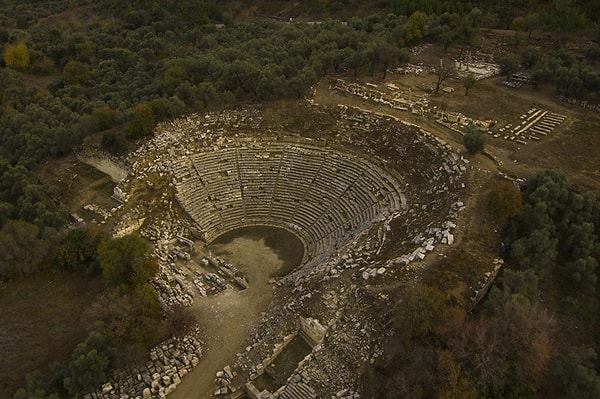
Stratonikeia takes its name from Stratonike, the wife of Antiochus I, the Seleucid king. Its foundation dates back to the 3rd century BC. When King Antiochus learnt that his stepson Seleukos and Stratonike were in love with each other, he supported this love and married Stratonike to his son. The city, which was founded in dedication to this mythological story, is also known as the ‘City of Love’.
According to ancient sources, the city was restructured in the Hellenistic period upon the settlement of the Carians. It gained great importance during the Roman Empire and was inhabited during the Byzantine, Seljuk and Ottoman periods. Thanks to this continuity, Stratonikeia is one of the best preserved multi-layered ancient cities in the world.
Source: Muğla Sıtkı Koçman Üniversitesi
Cultural and Architectural Richness
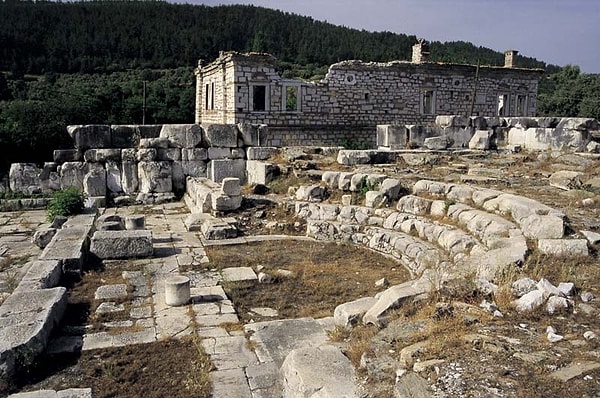
One of the most fascinating aspects of Stratonikeia Ancient City is that you can see the architectural traces of different civilisations together. The Roman Bath, Gymnasium, Bouleuterion (parliament building), and ancient theatre in the centre of the city fascinate those interested in archaeology, while the Ottoman-era Şaban Ağa Mosque and stone houses offer touches of the more recent past.
The ancient theatre attracts attention with a capacity of approximately 15,000 people. Structures such as the agora, the stoa and the collonaded street prove that Stratonikeia was an important political and commercial centre of the period. The city also has one of the largest ancient gymnasium buildings in the world.
Source: Memphis Tours
Mythology and Legends in Stratonikeia
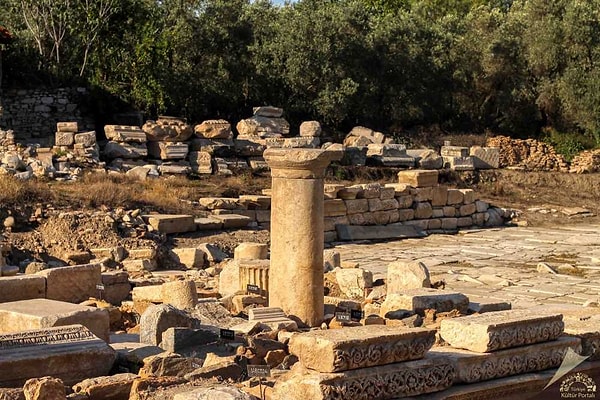
Stratonikeia is rich not only with its historical buildings but also with its mythological stories. The love of Stratonike and Seleucus is remembered as a rare imperial pardon in antiquity. In addition, the resistance of the people of the city in the face of wars and oppression has been the subject of heroic stories over time. It is possible to hear the echoes of these stories in the legends told among the local people.
Source: Kültür Portalı
Places to See in Stratonikeia Ancient City
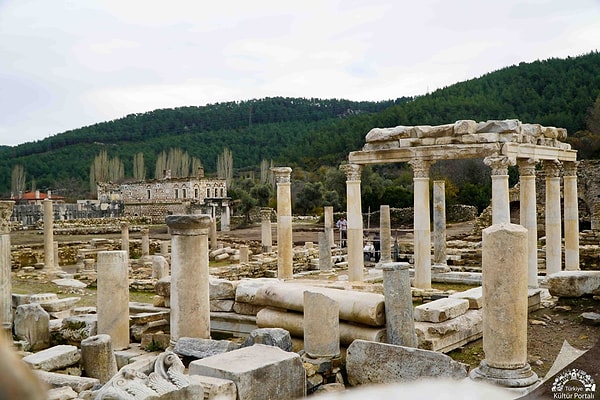
One of the most important elements that make Stratonikeia special is that it presents the buildings of different periods together and in a very well preserved way. While travelling in the ancient city, you will witness not only the Roman or Hellenistic period, but also the Byzantine, Principalities and Ottoman periods. Here are the must-see buildings in Stratonikeia Ancient City:
Ancient Theatre: Located on the hillside, this impressive structure is one of the largest theatres in the region with a capacity of approximately 15,000 people. The stage building and seating steps have largely survived. Especially in the morning hours, the shady parts of the theatre can be a peaceful break point.
Bouleuterion (Parliament Building): This building from the Roman period is one of the important buildings reflecting the political atmosphere of the period. It has been restored and opened to visitors.
Gymnasium: The gymnasium, one of the most striking structures of Stratonikeia, was the education and sports centre of the Ancient Age. The size of the building shows how important the city was. It still stands today with its impressive columns.
Agora and the Collonaded Street: Shops and buildings line both sides of the collonaded street dividing the city into two. This place was the heart of both trade and social life. Today, it is possible to feel as if you are walking in the past.
Saban Aga Mosque and Ottoman artefacts: Among the ancient ruins, the 19th-century Şaban Aga Mosque may surprise you. This structure shows that Stratonikeia is a living settlement beyond being an archaeological site.
Stone Houses and Eskihisar Village: The traditional stone houses in the ancient city show visitors how the past and the present are intertwined. In this respect, Stratonikeia offers not only archaeological but also ethnographic richness.
Source: Kültür Envanteri
Present State: A Vibrant Archaeological Excavation Site
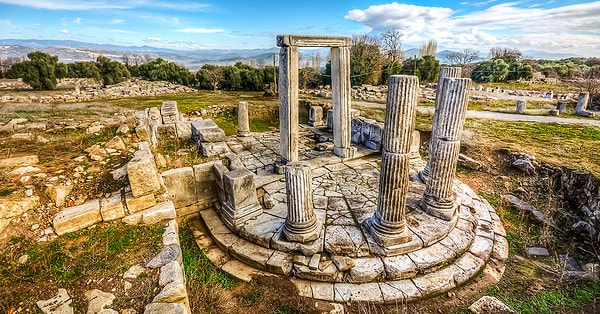
Stratonikeia today is an area that can be both visited and excavated. Excavations are carried out regularly every year and new structures are unearthed. For this reason, the ancient city has a constantly developing and deepening historical texture. The findings from the excavations are exhibited in the Muğla Museum.
Entrance to the city is free of charge. In the summer months, it is more comfortable to visit early in the morning or in the cool of the afternoon. Since shaded areas are limited, it is recommended to bring a hat and water with you.
Source: Anadolu Arkeolojisi
How to get to Stratonikeia?

Stratonikeia Ancient City is approximately 7 km away from the Yatağan district of Muğla. It is very easy to reach by private car. You can search for ‘Stratonikeia Ancient City’ or ‘Eskihisar Village’ in the navigation. For those who want to reach by public transport, minibuses run from Muğla to Yatağan, and a taxi can be taken from Yatağan to the city.
Source: Arkeolojik Haber
Places to See Near Stratonikeia
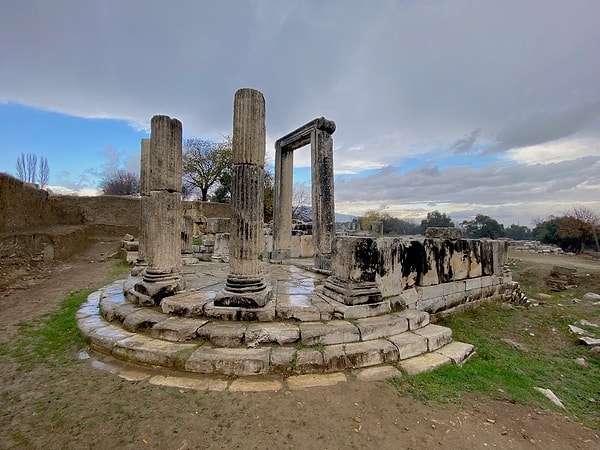
After visiting Stratonikeia, we recommend that you add other historical and natural beauties in the region to your route:
Lagina Temple of Hecate: Lagina, only 10 km from Stratonikeia, is one of the important divination centres of the ancient world. The temple dedicated to Hecate has been the centre of religious ceremonies.
Bodrum Ancient Theatre and Mausoleum of Halicarnassus: It is approximately 1 hour from Stratonikeia.
Bafa Lake and Herakleia Ancient City: This area, where nature and history are intertwined, is especially ideal for photographers.
Yatağan Thermal Power Plant and Energy Museum: If you are interested in energy history as well as history, it can be an interesting stop.
Source: Küçük Dünya
Keşfet ile ziyaret ettiğin tüm kategorileri tek akışta gör!

Send Comment